Tutorial Session 1
1. Interferometry for Precision Engineers – Part I: Principles of surface form and texture measurements
Peter de Groot is fascinated by interference fringes and their practical use for measuring things. He began his optics career by building a reflective telescope fifty years ago, grinding and polishing the main mirror by hand, and testing it with the Foucault knife-edge test. He enjoys discovering the underlying principles and hidden links behind creative work in science and engineering. His research has led to 140 US patents for optical instruments, which together with over 220 technical papers, tutorials, and book chapters, have gathered nearly 15,000 citations. He is a Fellow of SPIE, Optica, the Institute of Physics, and the International Academy of Engineering and Technology, and is the 2025 President of SPIE, the International Society for Optics and Photonics. An experienced teacher and lecturer, he is a short-course instructor and honorary professor. Peter is the recipient of the 2024 Lifetime Achievement award from ASPE.
Preview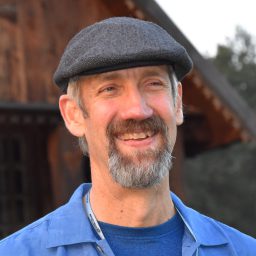
Tutorial Overview
This is a lecture-style tutorial on the basics of interferometry for measurements of surface form and texture for precision engineering applications. This course will take us through the history and theory of interferometry, leading to modern instrumentation such as coherence scanning interference microscopes and laser Fizeau systems for optical testing. The emphasis will be on the fundamental physical optics principles that drive the choice of instrument configuration, data processing, error minimization, interpretation of results, and conformance to international standards. Relevant applications include surface structure analysis, optical fabrication and testing, semiconductor manufacturing, industrial components, and health sciences.
Learning objectives
By the end of the course, you will be able to describe the underlying science behind interferometric measurements and will have greater confidence when using interferometry for practical surface metrology in precision engineering. This lecture will fully prepare you for the afternoon course on
“Interferometry for Precision Engineers – Part II: Workshop”.
Intended audience
This is a beginning to intermediate level course, with material ranging from basic to complex, providing both an overview and reference for further study. The intended audience is engineers, scientists and measurement specialists interested in gaining a greater understanding of the operating principles and best practice use of advanced optical instrumentation.
2. Spindle Metrology
Byron Knapp has over twenty years of experience in the design and development of precision manufacturing systems and precision machine design. He received his BS, MS and PhD degrees in Mechanical Engineering at The Pennsylvania State University under Professor Eric R. Marsh. Byron has been a Senior Engineer at Professional Instruments Company for 16 years where his focus has been on air bearing spindle characterization using finite element and modal analysis, nanometer-level spindle metrology, and occasional forays into oil hydrostatic spindle testing. Byron is an active member of the international precision engineering communities of ASPE and euspen.
Contact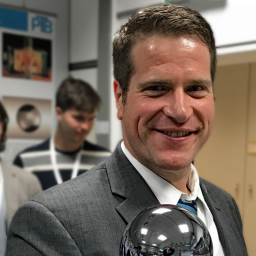
Tutorial Overview
This tutorial continues in the longstanding tradition of Axes of Rotation tutorials previously offered at ASPE by Dr. Eric Marsh and the late James Bryan. A copy of Eric Marsh’s seminal book, Precision Spindle Metrology, will be provided to pre-registered attendees.
We will cover all of the major concepts in Dr. Marsh’s book including: 1) explanations and examples of the error motion, stiffness, and thermal growth of precision spindles; 2) terminology for defining the behavior of spindles used in instruments, measuring machines, machine tools, and rotating equipment of all kinds; 3) instrumentation available for measuring the various parameters of spindle performance.
Learning objectives
A special demonstration of a commercially available Lion Precision spindle error analyzer will help reinforce the concepts. Many of the precision spindle metrology principles are illustrated through case studies taken from the Professional Instruments vault. In addition, some emerging topics of spindle metrology, such as speed stability and simultaneous multiple fixed sensitive directions not covered in the book, will be introduced.
3. Eyeopeners for Precision Designers
Susan van den Berg
Susan van den Berg is a lecturer at Fontys University of Applied Sciences in the Netherlands. She obtained her master’s degree in Mechanical Engineering and a Master’s of Technical Design (MTD) in Advanced Industrial Design Engineering, both from Delft University of Technology. At Fontys, her main activities include teaching design principles at both bachelor’s and master’s levels and supervising graduate projects for bachelor’s and master’s students. She is the author of Design Concepts and Strategies for Precision Engineering.
Contact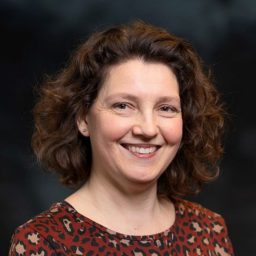
Piet van Rens
Piet van Rens has decades of experience in precision system design, starting with his work at the Laboratory of Space Research in Utrecht and continuing through a 24-year career at Philips. He has contributed to fundamental texts in the field, such as The Devil’s Picture Book (desDuivels Prentenboek). In recent years, he has worked as an independent consultant, advising high-tech companies including ASML. In 2022, he received the ASPE Lifetime Achievement Award for his contributions to precision engineering.
Contact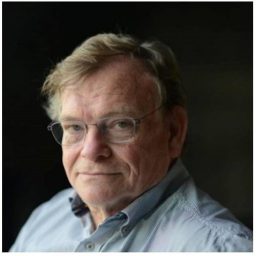
Tutorial Overview
In precision engineering, small design choices can have a huge impact on system performance. This tutorial provides key insights—eyeopeners—into the fundamentals of precision design, covering principles that are essential for robust and high-performance mechanical systems.
Learning objectives
We will explore how to manage degrees of freedom through exact-constraint design, the effects of stacking subsystems, and how to optimize system stiffness by tracing the route of forces. We will introduce the energy method, which is a useful tool to derive the system stiffness. Additional topics include kinematic couplings, positioning against stops, clamping, and rolling interactions.
Participants will gain a deeper understanding on how to think critically about precision design and recognize solutions that may not be obvious at first glance.
4. Displacement Measuring Interferometry (DMI)
Dr. Vivek Badami has been involved in the development of ultra-high precision metrology instruments and systems for over 30 years. He currently leads the Optical Systems Group at Zygo and is also a Technology Fellow. He is actively involved in mentoring young engineers in the art and science of precision engineering and has taught numerous tutorials on a variety of topics through the ASPE tutorial program. Vivek is active in the precision engineering and metrology communities and is a past president of the American Society for Precision Engineering (ASPE). He has served the Society in various capacities, including as Associate Editor for the international journal of the Society, Precision Engineering. Vivek has authored several technical papers, a book chapter and holds several patents. Vivek obtained his doctorate from the Center for Precision Metrology at the University of North Carolina at Charlotte, where he has served as an adjunct faculty in the Department of Mechanical Engineering and Engineering Science. Vivek is a Fellow of the ASPE.
Contact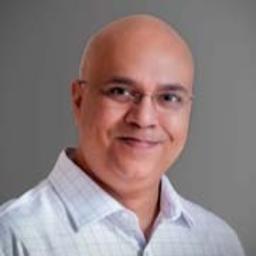
Tutorial Overview
Interferometric displacement measurement is a key precision engineering tool for a variety of applications including realizing the unit of length, machine tool metrology, stage characterization, metrology and high-accuracy position feedback. The technique offers significant advantages over other displacement measuring devices in terms of achievable range and resolution while also enabling measurements that comply with the Abbe principle, a core tenet of precision engineering.
This introductory course will cover the basic principles of the technique, briefly explain the operation of commercial variants available today and then concentrate on the details of heterodyne interferometry that forms the basis of high-precision displacement measurement. The operating principles and optical layouts of common interferometer configurations will be covered, providing participants with a basis for developing their own custom configurations. A range of applications that highlight the versatility of this technique will be discussed including some examples significant to precision engineers. A basic treatment of the key uncertainty contributors will be provided, culminating in an application example of a typical measurement and an associated uncertainty budget.
Learning objectives
You will learn the following:
- Differentiate between distance and displacement measurement
- Appreciate the advantages of this technique over other displacement measurement techniques
- Describe the basic operating principles of interferometric displacement measurement
- Articulate the functioning of a heterodyne interferometer system and contrast it to a homodyne system
- Understand the operating principles of several common interferometer configurations and use these as a basis for new configurations
- Identify the major sources of measurement uncertainty and their magnitudes to estimate the overall uncertainty of a measurement.
5. Geometric specification & verification – Symbiosis in tolerancing and metrology – Part I
Dr. Jaime Berez
Dr. Jaime Berez is an Assistant Professor in the Department of Mechanical Engineering and Engineering Science at UNC Charlotte where he works with the Center for Precision Metrology, an industry-university collaborative research center. He conducts research at the intersection of advanced manufacturing and metrology, often with a focus on metrology as applied to metal additive manufacturing (AM) machines and workpieces. His research often leverages geometric dimensioning and tolerancing (GD&T) and he is passionate about integrating engineering product definition concepts (GD&T, metrology, standards) into engineering curricula using strong teaching pedagogy. Jaime is certified by ASME as a Senior Level GD&T Professional (GDTP) in accordance with the qualifications of ASMEY14.5.2–2017.
Contact
Dr. Edward Morse
Dr. Edward Morse is the Norvin Kennedy Dickerson Jr. Distinguished Professor in mechanical engineering at the University of North Carolina at Charlotte, and is the director of UNC Charlotte’s Center for Precision Metrology. His current research interests include large scale metrology, assembly modeling and analysis, machine tool metrology, uncertainty estimation and analysis, tolerance standards and modeling, and various aspects of computational metrology (including the application of machine learning). Ed is the chair of the ASME B89 committee on Dimensional Metrology and is a long-time member of ASME Y14.5.1 on the Mathematical Definition of Dimensioning and Tolerancing Principles. He also represents the US on ISO Technical Committee 213 in working groups dedicated to metrology, tolerancing, and uncertainty.
Contact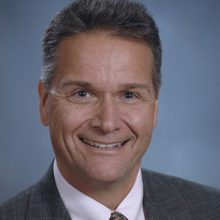
Tutorial Overview
This tutorial will provide attendees with a comprehensive introduction to the language of geometric product specification (GD&T), combined with the practical considerations of determining conformity or nonconformity to these specifications (metrology). While geometric specifications are well defined on ideal geometry, the interaction of non-ideal geometry with various measuring systems provides challenges in determining conformity to the specifications. This tutorial uses the discussion of gaging and measuring techniques to not only reinforce the understanding of the geometric specification, but to provide the attendee with guidance in choosing and utilizing measuring systems. The two-part tutorial will build from basic concepts of specification and gaging to more advanced topics such as functional tolerancing, coordinate metrology algorithms, sources of measurement error in metrology systems, and common areas of misalignment or ‘methods divergence’ between the intent of a specification and the method of verification. While there will be some interplay between the two parts of this tutorial, Part 1 will largely focus on specification (GD&T) while Part 2 will largely focus on verification (metrology).
Note: Part 1 of this tutorial is strongly recommended as a prerequisite for Part 2, which will use vocabulary, symbology, and concepts from Part 1 extensively. Part 1 may be taken alone if desired.

